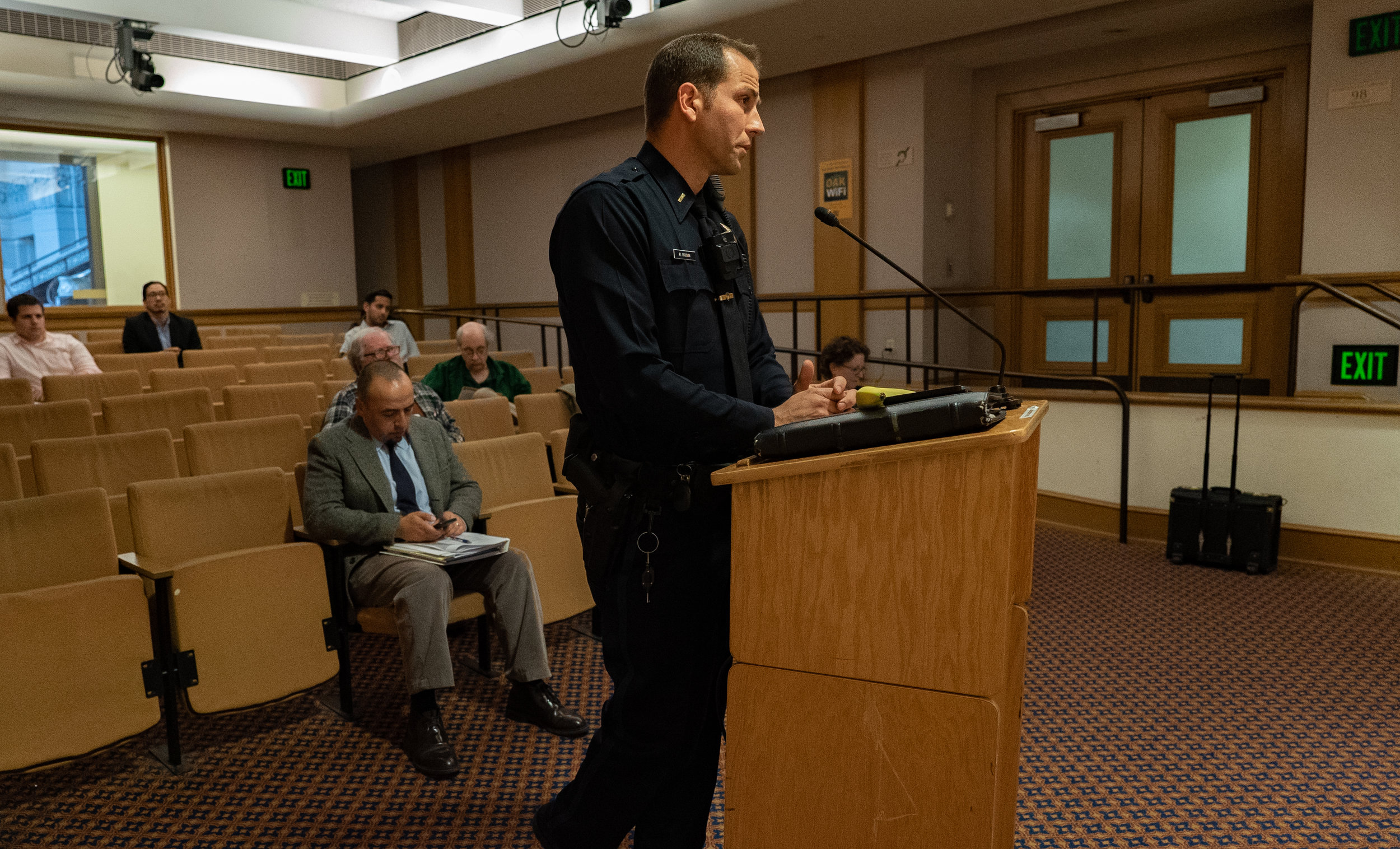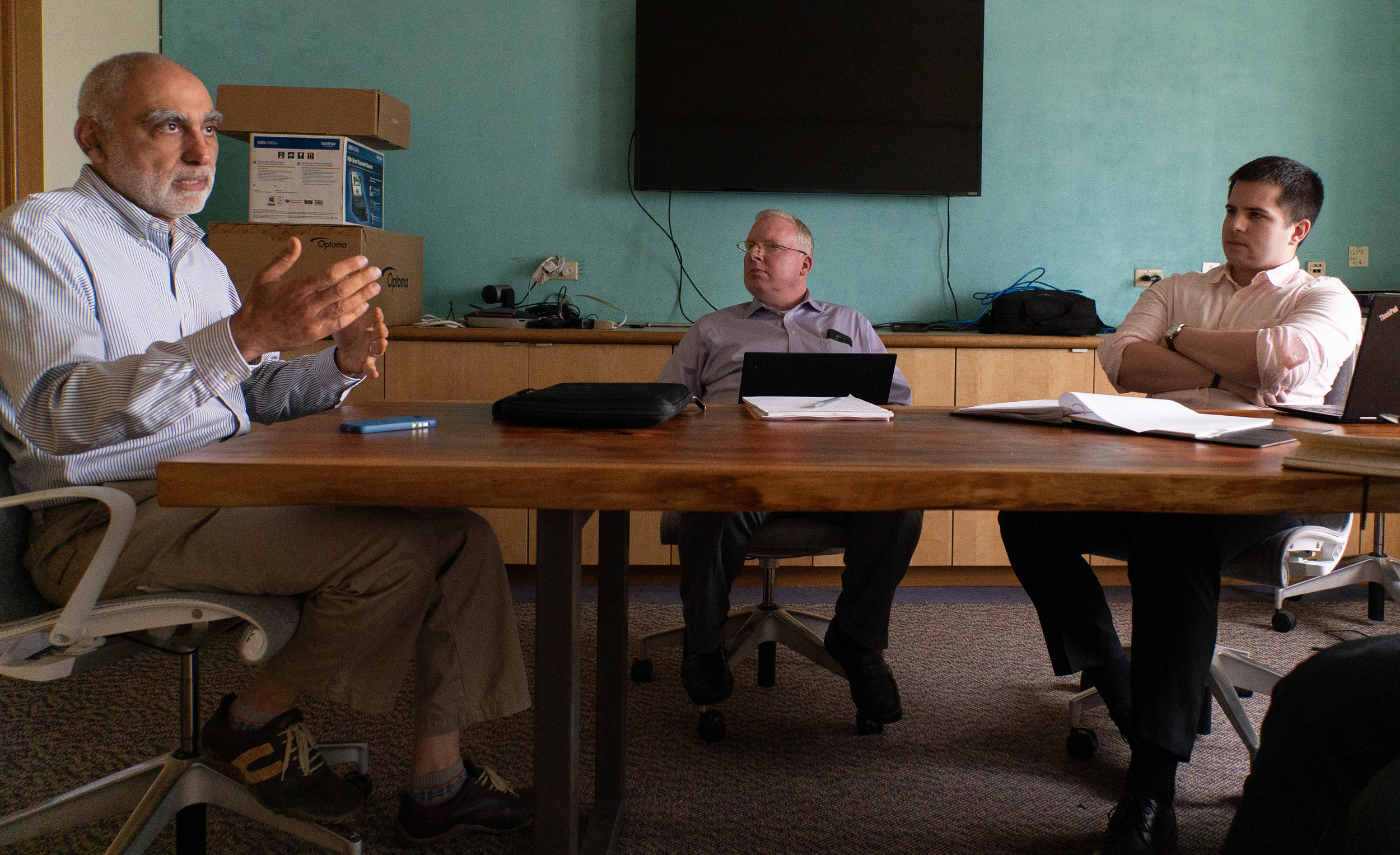In many departments across the country, “modern” policing involves a shift from solely reactive policing— that is, trying to solve crimes that have already occurred and investigating individuals suspected of having committed a crime — toward more proactive policing, or seeking to predict and prevent crime from occurring.
Much of this shift relies on exploiting new surveillance technology and the vast amount of data that exists about our everyday activities. Many departments have access to all manner of surveillance tech, from Stingrays to license plate readers to social media monitoring to video cameras.
At the same time, powerful surveillance tools often are acquired with little democratic input or approval.
Here’s a common example: a vendor pitches a new technology to a department. Police apply for and receive a federal grant that covers most, if not all, of the cost. The police then start using the technology with minimal consideration by local government (and often without the knowledge of the community at large) as to whether the technology is appropriate and how it may impact individual privacy.
While many cities are dealing with the complications associated with new and emerging tech, state surveillance has a special historic significance in Oakland, California—the city that was home to the FBI’s COINTELPRO monitoring of the Black Panther Party in the 1960s. Today, privacy advocates in Oakland have successfully established a formal entity with the teeth to ensure that the city and police seek approval from the public before acquiring any surveillance technology.
Organized resistance leads to citizen commission and policy change
In 2013, the City of Oakland proposed expanding its Domain Awareness Center (DAC), a port security monitoring system, to serve as a city-wide centralized surveillance hub, aggregating data from public and private security cameras, license plate readers, and other monitoring equipment across the city, some with real-time capability. Proposed components of the DAC included integration of closed-circuit video feeds (CCTV) and facial recognition software.
A coalition of attorneys, community groups, and concerned citizens, organizing as Oakland Privacy, worked with local groups to protest the DAC’s expansion beyond the port. Eventually, the Oakland City Council rejected the expansion proposal.
The DAC’s rejection, and the work of Oakland Privacy to mobilize community groups around it, made surveillance a priority concern for the city government. In early 2016, the Oakland City Council established the Oakland Privacy Advisory Commission (OPAC) to vet any proposed surveillance technologies. Made up of privacy advocates, technologists, and lawyers, the nine-member, all-volunteer group is formally tasked to advise the City of Oakland on best practices to protect citizen privacy rights.
The City Council strengthened OPAC’s powers in 2018 when it approved an ordinance requiring any city agency that wishes to adopt surveillance technology—regardless of whether it requires any city expenditures—to go before the Commission and explain, in a written policy, how they intend to use it. OPAC then advises the Council on whether the technology, considering its proposed use, benefit to public safety, and risks to individual privacy, merits acquisition.
Further, the 2018 ordinance requires the City to submit annual reports to OPAC on its use of existing surveillance tech so that the Commission may, on an ongoing basis, weigh the costs and benefits of continued use of the technology. The ordinance also contains provisions protecting whistleblowers and prohibiting the city from entering into non-disclosure agreements with vendors that could keep surveillance tech secret.
Our visit to Oakland and seeing OPAC in action
Staffers from the Policing Project, along with attorneys from Latham & Watkins working pro bono, visited Oakland in April 2019 to observe a monthly OPAC meeting. The agenda included proposals from the Oakland Police Department to use automatic license plate readers, and remote and mobile cameras.
Reviewing the submitted policies, the Commission questioned the proposed uses and the benefit they might provide to city residents. The Commission scrutinized the policy language for boilerplate language that was ambiguous in how the technology would be used. OPAC also asked about critical issues such as data retention and storage. These are some of the important questions that even the savviest or most progressive police departments might not consider—and an example of how OPAC’s active engagement pushes City agencies to think critically about surveillance and privacy.
As surveillance technologies and their use by law enforcement become both more powerful and more affordable, advisory bodies like OPAC, properly staffed by committed advocates who understand the issues and backed by sufficient political support, show a promising model of how the public can create a front-end check on state surveillance. It’s a sign of democratic accountability—when the public has the power to approve, modify, or reject proposed police practices before the police act.









